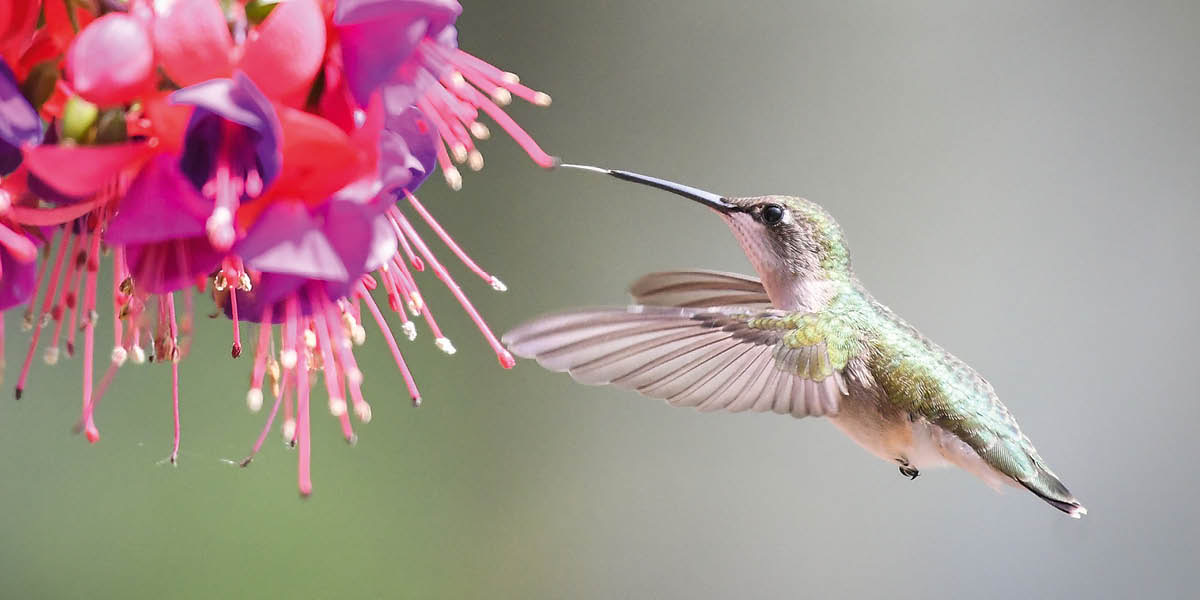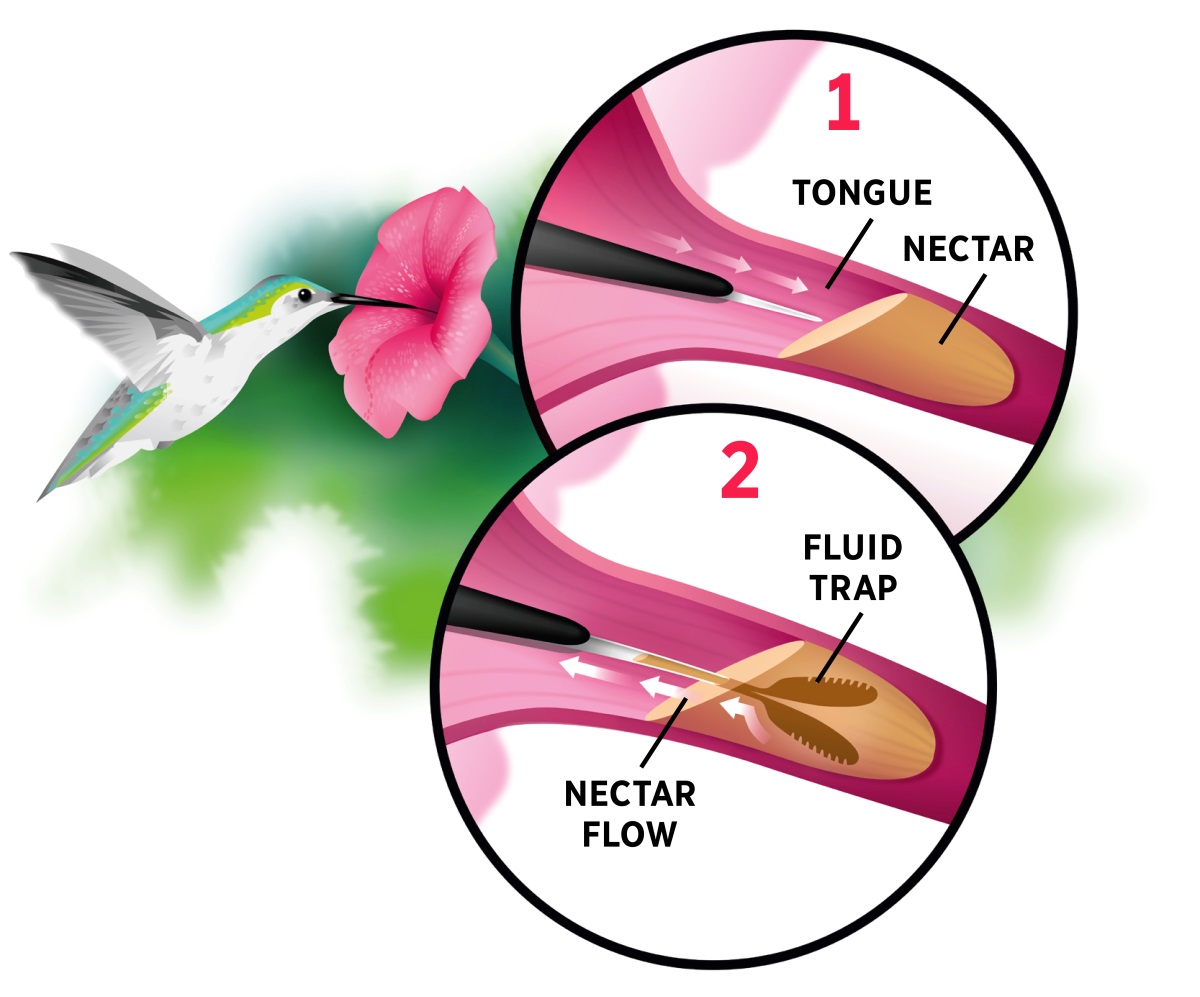The content displayed below is for educational and archival purposes only.
Unless stated otherwise, content is © Watch Tower Bible and Tract Society of Pennsylvania
You may be able to find the original on wol.jw.org

Moment/Robert D. Barnes via Getty Images
The Hummingbird’s Tongue
Scientists once thought that the hummingbird’s tongue drew up nectar by means of natural forces that move fluids up thin tubes—a process called capillary action. But later studies have shown that the bird uses a far more efficient method, one described as a “fluid trap.”
Consider: When the hummingbird’s tongue enters nectar, the tongue splits horizontally, forming two prongs. A groove runs along the tip of each prong. The grooves are actually closed slits. When the prongs enter the fluid, the grooves open up, and the tips of the tongue unfurl, enabling the bird to lap up nectar rather than draw it up as through a straw. When the tongue retracts, the reverse happens—the tips on the prongs close with the nectar trapped inside.

The whole cycle takes “less than a tenth of a second,” say researchers Alejandro Rico-Guevara, Tai-Hsi Fan, and Margaret Rubega. They also state: “The tongue tip is a dynamic liquid-trapping device that changes . . . shape dramatically as it moves in and out of fluids.”
Moreover, the device uses none of the tiny bird’s precious energy. The tips of the tongue unfurl and close in response to complex forces acting on them as they enter and leave the fluid.
Because the hummingbird’s tongue is such a highly efficient fluid trap, researchers believe that it could inspire applications in medicine, robotics, and other fields. It may even aid in the design of tools for mopping up liquids or oil spills.
See a hummingbird extend its tongue
What do you think? Did the hummingbird’s sophisticated tongue evolve? Or was it designed?